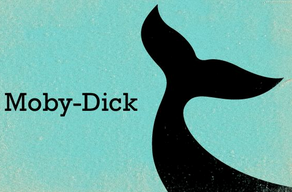
When I first started producing radio, I took it upon myself to enlighten my listeners with unusual sound combinations. I would edit my stories so that the fast and the slow were sporadically mixed. Long, slow fade-ins were placed between quick, short speech excerpts. Sometimes I would sandwich five minutes of music between fifteen-second intervals of an interview. I thought I was doing my audience a favor by challenging their normal listening habits. I thought that the element of surprise would foster their keen listening.
Now when I go back and listen to those stories, I realize that more than catching their attention, I was probably testing my listeners’ patience. The varying speeds of speech and music, and the unpredictability of it all, probably prevented the kind of attention I was hoping to encourage. In creating such a wild mish-mash of fast and slow, I think I thwarted my own attempt at producing immersive, engaging stories.
There’s nothing wrong with a slow or fast story, per se, but over time I’ve come to prefer one or the other, not both at the same time. Listening to a good story should be like walking, or rowing, or carrying on a comfortable conversation. It should have a rhythm, a tempo, and it should keep that pace from beginning to end. This, I think, is more likely to sustain a listener’s attention over a long period of time.
If you listen carefully to any great radio story, you’ll notice that there is usually a regular pace to its editing. The distance between speech, music, and ambient sound clips will be pretty consistent. Radiolab is super fast; This American Life tends to be on the medium side, sometimes slow. One venue that produces very immersive medium-paced stories, in which the balance between narration and scoring sustains a natural sense of momentum, is WNYC’s Studio 360. They cover the historical as well as the contemporary, in a sort of theme-based cultural exposé. Their Peabody-award-winning episode, Moby-Dick, traces the influence that Melville’s 1851 book has had on several artists. Host Kurt Andersen speaks with, among others, musician Laurie Anderson, painter/sculptor Frank Stella, playwright Tony Kushner, and Juilliard professor Stanley Crouch.
Towards the beginning of this episode, Andersen follows Professor Crouch into the classroom at Julliard, where he is teaching a class on jazz in American history. Crouch compares the prose of Herman Melville to the stride piano of James P. Johnson, even though Moby-Dick was written ‘half a century before jazz was born.’ This five and half minute vignette [7:00-12:30] follows a typical editing pattern of a just-right-paced story.
If you listen with a stopwatch, you’ll find that this story has a pretty even clip: 20-40 seconds of speech are followed by 10-20 seconds of music or ambient sound. There is some variation, but the regular rate of exchange between narration and music allows the listener to take in a reasonable amount of information, then have moment to process it, while anticipating the information to come.
The music in this piece is edited to round out the ideas of Professor Crouch, as well as to cue us as listeners about what to expect next. In the opening, Professor Crouch compares the ‘fearlessness’ of Melville’s prose to the improvisational technique in Johnson’s music. As Crouch draws this parallel, we hear the piano underneath, illustrating his idea. When he has finished a sentence, the piano music takes the stage for 10-20 seconds, as if adding color to the picture Crouch has created.
Then, just when we expect it, the music fades down slowly, but stays softly underneath, and Crouch comes in with a new idea. The music simultaneously begins a new motif, paralleling the change in the direction of the story. When Crouch finishes his sentence, the music surfaces again, as if it absorbed Crouch’s new idea and is further embellishing it. The balance between narration and scoring in this piece, and the steady tempo of the exchange, sets up a structure of anticipation and satisfaction which carries us listeners merrily along throughout.
A good tempo is the kind of thing your listeners will probably never notice. It only stands out when it’s missing. If you listen to this Studio 360 piece, you’ll find it much easier to pay attention to the story than to notice the pacing. This, I’ve realized, is a good thing.
Moby-Dick
Kurt Andersen interviews Stanley Crouch [7:00-12:30],
Produced by Studio 360, Episode 1252, Dec 2011
